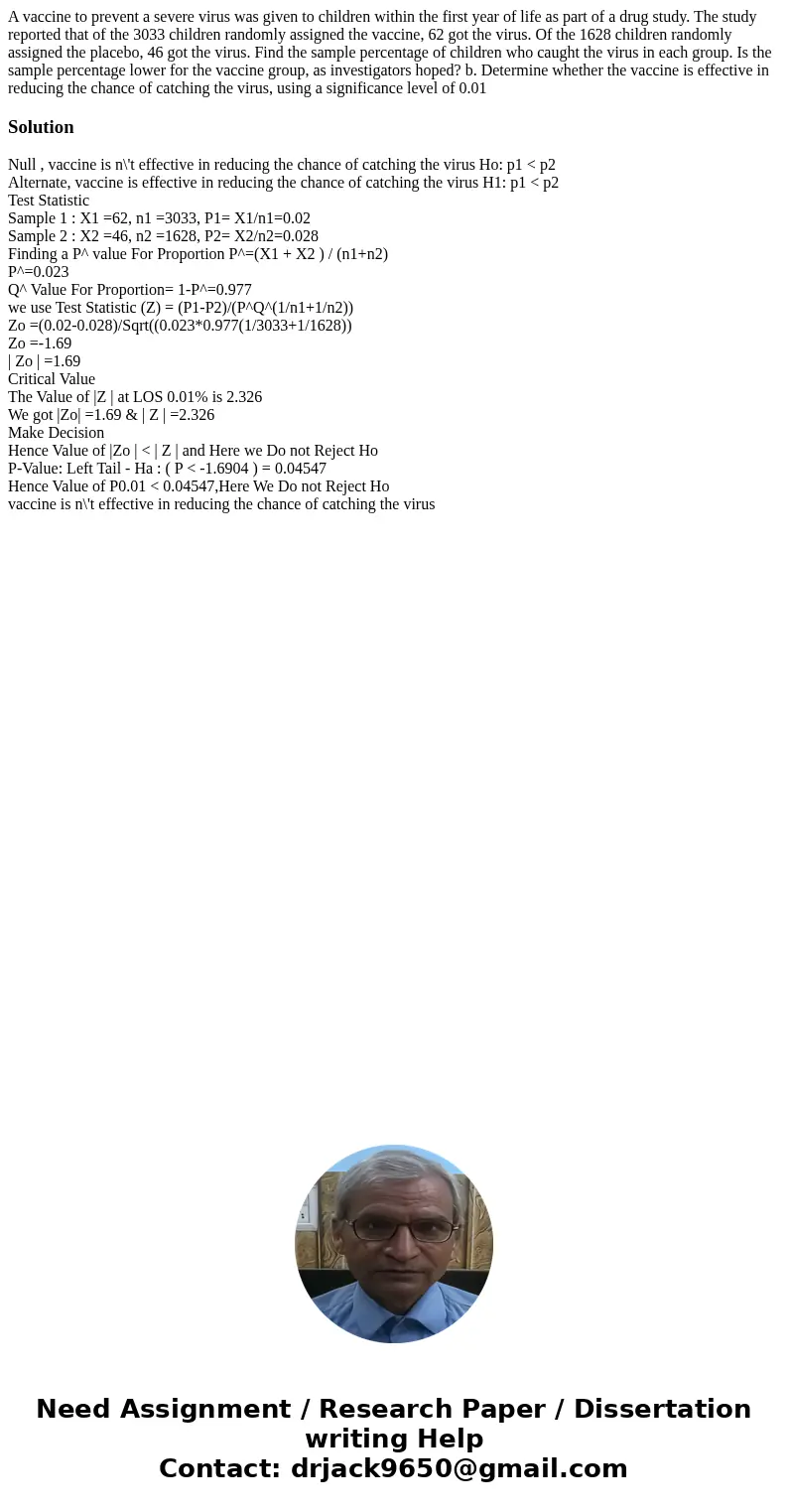A vaccine to prevent a severe virus was given to children wi
A vaccine to prevent a severe virus was given to children within the first year of life as part of a drug study. The study reported that of the 3033 children randomly assigned the vaccine, 62 got the virus. Of the 1628 children randomly assigned the placebo, 46 got the virus. Find the sample percentage of children who caught the virus in each group. Is the sample percentage lower for the vaccine group, as investigators hoped? b. Determine whether the vaccine is effective in reducing the chance of catching the virus, using a significance level of 0.01
Solution
Null , vaccine is n\'t effective in reducing the chance of catching the virus Ho: p1 < p2
Alternate, vaccine is effective in reducing the chance of catching the virus H1: p1 < p2
Test Statistic
Sample 1 : X1 =62, n1 =3033, P1= X1/n1=0.02
Sample 2 : X2 =46, n2 =1628, P2= X2/n2=0.028
Finding a P^ value For Proportion P^=(X1 + X2 ) / (n1+n2)
P^=0.023
Q^ Value For Proportion= 1-P^=0.977
we use Test Statistic (Z) = (P1-P2)/(P^Q^(1/n1+1/n2))
Zo =(0.02-0.028)/Sqrt((0.023*0.977(1/3033+1/1628))
Zo =-1.69
| Zo | =1.69
Critical Value
The Value of |Z | at LOS 0.01% is 2.326
We got |Zo| =1.69 & | Z | =2.326
Make Decision
Hence Value of |Zo | < | Z | and Here we Do not Reject Ho
P-Value: Left Tail - Ha : ( P < -1.6904 ) = 0.04547
Hence Value of P0.01 < 0.04547,Here We Do not Reject Ho
vaccine is n\'t effective in reducing the chance of catching the virus

 Homework Sourse
Homework Sourse